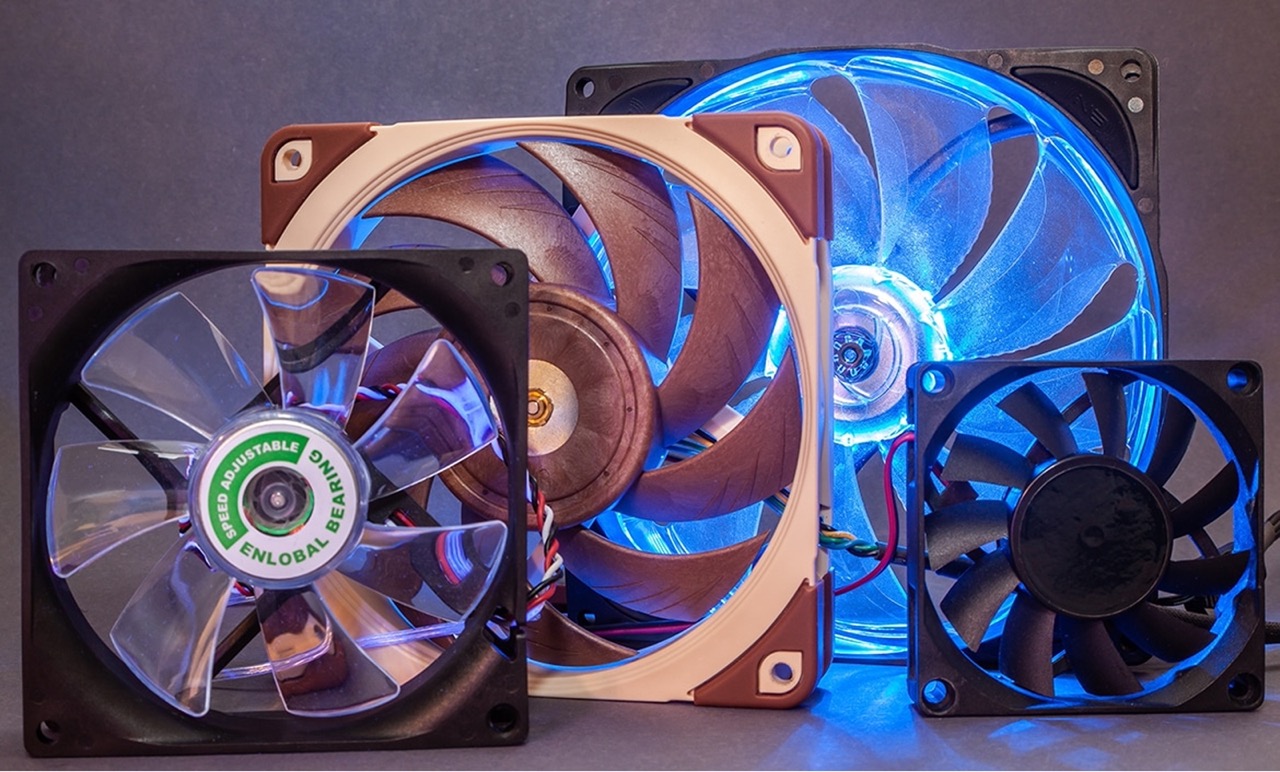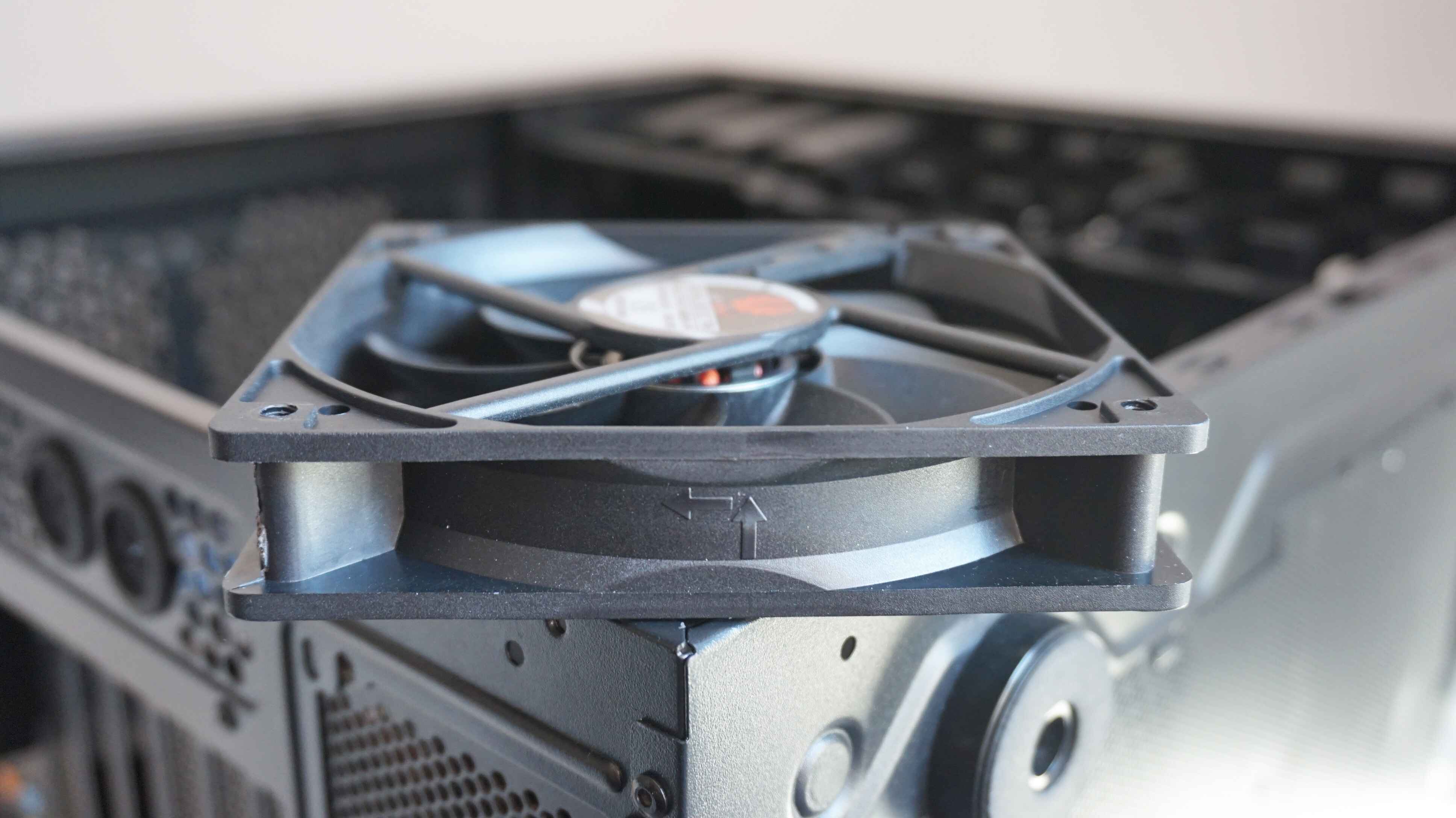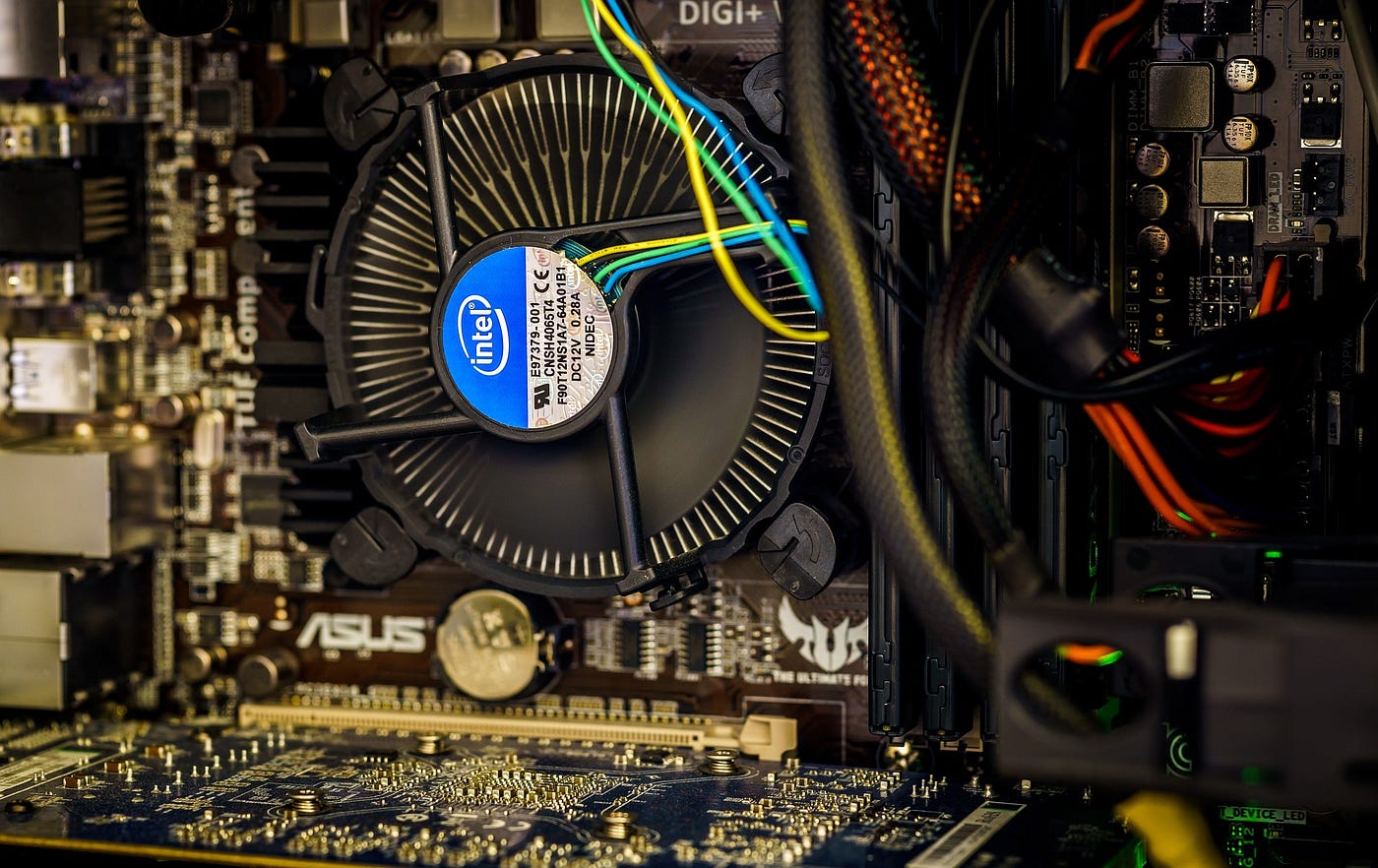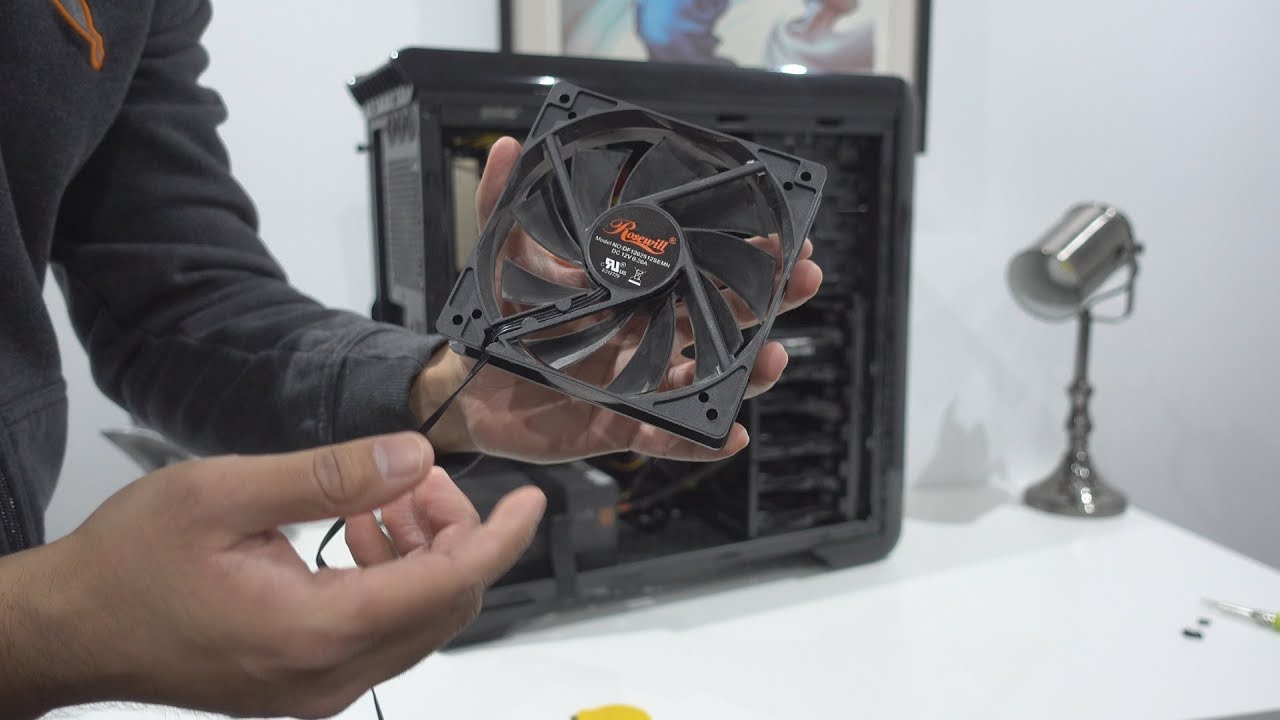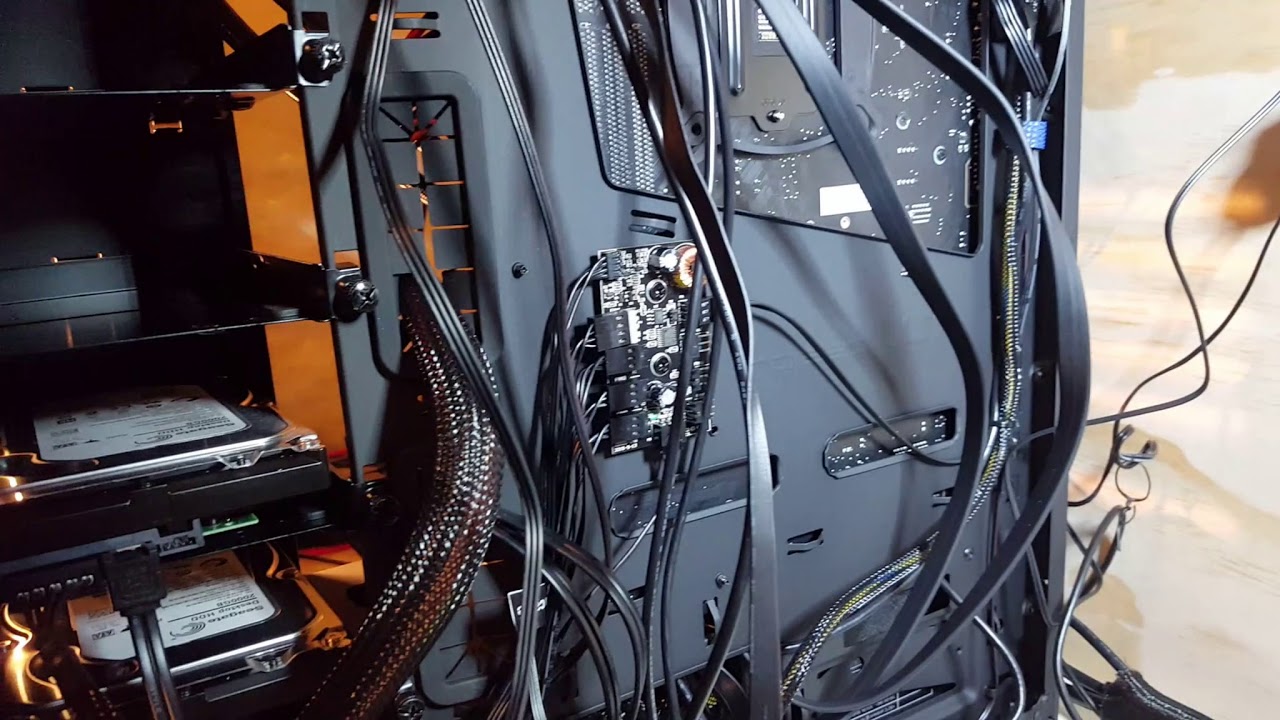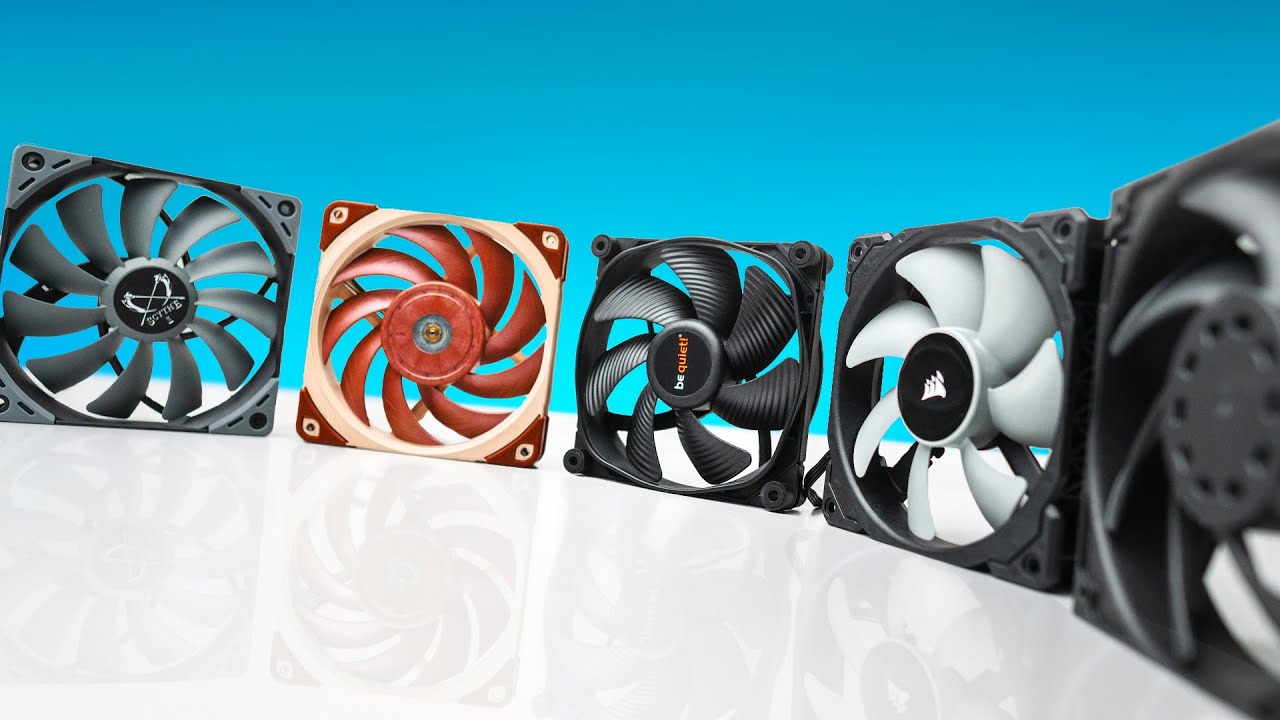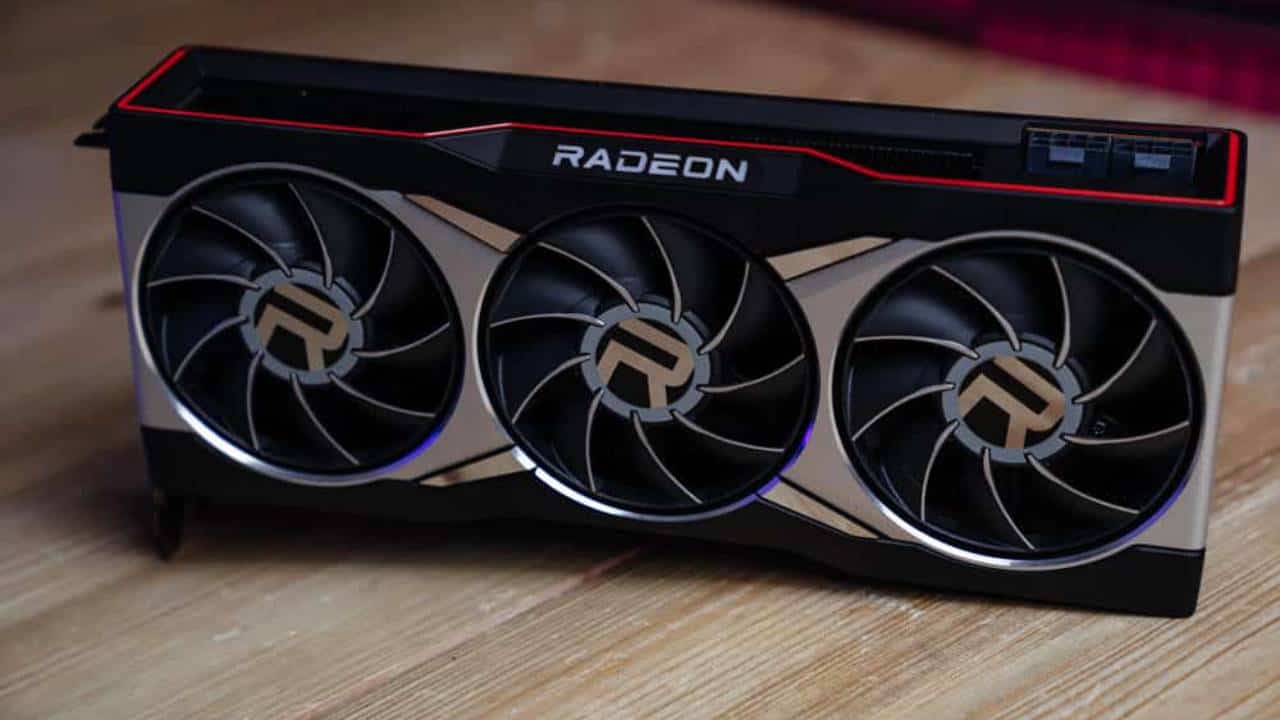Introduction
Welcome to our guide on setting up case fan speed for the best noise to performance ratio. If you are a PC enthusiast or simply someone who values a quiet and efficient system, understanding how to control your case fan speed is crucial. Case fans play a vital role in maintaining optimal temperatures inside your computer, preventing hardware overheating and ensuring stable performance.
Managing fan speed effectively not only safeguards your components but also helps to reduce noise levels. Excessive noise from fans can be a nuisance, especially during intense gaming sessions or when you require a quieter environment for work or entertainment. By finding the right balance between performance and noise, you can enjoy a cooler, quieter, and more efficient PC experience.
In this guide, we will delve into the factors to consider when setting up case fan speed, explore the different types of case fans available, and provide strategies for both manual and software-based fan control. Whether you are a beginner or an experienced PC builder, this article will equip you with the knowledge and tools to optimize fan speed for the perfect balance between performance and noise.
Why Fan Speed is Important
Fan speed is a critical aspect of maintaining the overall health and performance of your computer system. Proper fan speed management helps to ensure effective cooling, preventing components from overheating and extending their lifespan. By keeping temperatures within optimal ranges, you can also prevent performance throttling that can occur due to excessive heat.
Moreover, fan speed directly affects the noise level of your computer. Case fans can generate significant noise, especially when running at high RPMs. This can be disruptive, distracting, and even detrimental to your productivity or gaming experience. By controlling fan speed, you can strike a balance between performance and noise, creating a quieter environment without sacrificing cooling efficiency.
Another reason why fan speed is important is power consumption. Running fans at higher speeds requires more power, resulting in increased energy consumption and potentially higher electricity bills. By optimizing fan speed, you can reduce power consumption without compromising cooling performance, leading to energy savings in the long run.
Furthermore, fan speed management can also impact the overall aesthetics of your system. Many PC enthusiasts strive for a clean, sleek, and minimalist look, and noisy fans can detract from that aesthetic. By fine-tuning fan speed, you can minimize noise levels and maintain the visual appeal of your computer.
In summary, fan speed is important for several reasons:
- Efficient cooling of components
- Preventing overheating and performance throttling
- Reducing noise levels
- Saving power and reducing energy consumption
- Maintaining the aesthetic appeal of your system
Now that we understand the importance of fan speed, let’s explore the factors to consider when setting up your case fan speed for optimal performance and noise levels.
Factors to Consider
When it comes to setting up case fan speed, there are several factors to consider in order to achieve the best performance and noise balance. Here are some key factors to keep in mind:
1. Temperature Requirements: The temperature requirements of your computer components play a crucial role in determining the appropriate fan speed. Higher-performing hardware, such as gaming graphics cards or overclocked processors, generate more heat and may require more aggressive cooling. On the other hand, if you have low-power components or use your system for less demanding tasks, you can opt for lower fan speeds to maintain a quieter environment.
2. Fan Placement and Configuration: The placement and configuration of your case fans can impact airflow and cooling efficiency. Consider the number of fans installed, their positions, and whether they are intake or exhaust fans. Well-planned airflow ensures that heat is effectively removed from the system, reducing the workload on the fans and allowing for quieter operation.
3. Noise Tolerance: Everyone has a different tolerance for noise. While some individuals may prioritize a near-silent system, others may not mind a bit of fan noise as long as the performance is optimized. Understanding your own noise tolerance will help you determine the acceptable noise levels and guide your fan speed settings accordingly.
4. Fan Control Options: Assess the available options for fan control in your system. Some motherboards come with built-in fan control capabilities, allowing you to adjust fan speeds directly through BIOS settings. Alternatively, you may opt for fan control software that provides more advanced customization options. Knowing what control options are available to you will help you make informed decisions regarding fan speed management.
5. Software Compatibility: If you choose to use fan control software, ensure that it is compatible with your operating system and hardware. Check for compatibility with your motherboard, as well as any additional software you may be using for system monitoring or overclocking. Compatibility issues can lead to instability or unresponsive fan control, so it’s essential to choose software that works seamlessly with your system.
By considering these factors, you can establish an effective strategy for setting up your case fan speed in a way that optimizes performance, maintains stable temperatures, and keeps noise levels in check. In the next section, we will explore the different types of case fans available, providing insight into their strengths and ideal applications.
Types of Case Fans
When it comes to choosing case fans, there are various types available, each with its own characteristics and strengths. Understanding the different types will help you make informed decisions based on your cooling needs and noise preferences. Let’s explore the most common types of case fans:
1. Axial Fans: Axial fans, also known as box fans or in-line fans, are the most common type of case fan. They feature a simple design with blades that rotate around an axis. Axial fans are known for their high airflow capability while generating moderate noise levels. They are typically used as the main cooling fans in computer cases, providing efficient airflow throughout the system.
2. PWM Fans: PWM stands for Pulse-Width Modulation. PWM fans are equipped with a 4-pin connector that allows for precise control of fan speed. The PWM signal regulates the fan’s motor speed, resulting in quieter operation at lower temperatures and increased speed as temperatures rise. These fans are ideal for setups that require automatic adjustments based on system load and temperature fluctuations.
3. High Static Pressure Fans: High static pressure fans are designed to overcome air resistance, making them ideal for situations where airflow needs to pass through tight spaces or dense heatsinks. These fans are commonly used for radiator cooling and in scenarios where maximizing cooling efficiency is crucial.
4. Low-Noise Fans: Low-noise fans, as the name suggests, focus on minimizing noise levels without compromising cooling performance. They achieve this through design features such as specialized blade shapes, anti-vibration mounts, and low RPM operation. These fans are perfect for individuals who prioritize a quiet computing experience.
5. RGB Fans: RGB fans are a popular choice for those who want to add a touch of style and personalization to their systems. These fans come with built-in LED lighting, allowing you to customize the colors and effects to match your aesthetic preferences. RGB fans are available in various airflow and noise level configurations, ensuring you can find one that meets your cooling needs.
Considering your cooling requirements, noise preferences, and desired aesthetics, you can choose the appropriate type of fan to suit your needs. In the next section, we will explore various methods to set up and control fan speed, whether through software or manual adjustments.
How to Set Up Fan Speed
Setting up fan speed requires careful consideration and an understanding of the various options available. Whether you prefer software-based control or manual adjustments, there are several methods to customize fan speed based on your specific needs. Let’s explore two common approaches:
1. Using Software to Control Fan Speed: Many motherboard manufacturers provide software utilities that allow users to control fan speeds directly from their operating system. These software packages typically come with user-friendly interfaces where you can adjust fan speeds, create custom fan curves based on temperature thresholds, and even synchronize fan speeds with other system components. Some popular software options include SpeedFan, AI Suite (ASUS), and Corsair iCUE. Check your motherboard manufacturer’s website for the appropriate software that is compatible with your system.
2. Manual Fan Control: If you prefer more hands-on control, you can manually adjust fan speeds through the BIOS settings. Restart your computer and enter the BIOS by pressing the designated key during boot (common keys include DEL, F2, or F10). Once in the BIOS, navigate to the fan control section, which may be under “Hardware Monitor” or a similar category. From there, you can adjust fan speeds either by selecting predefined profiles (such as “Silent” or “Performance”) or by manually setting percentages or RPM values. Keep in mind that the BIOS options may vary depending on your motherboard model.
No matter the method you choose, it’s essential to monitor your system’s temperatures under different loads and scenarios to ensure optimal cooling. Utilize software tools like HWMonitor or Core Temp to keep track of temperature readings, and adjust fan speeds accordingly. Regularly check for firmware updates for your motherboard and fan control software to ensure compatibility and access to the latest features and optimizations.
Remember that fan speed is a delicate balance between performance and noise. Take the time to experiment and find the optimal settings for your specific system requirements and noise tolerance. With the right setup, you can achieve a quiet and well-cooled PC that performs at its best.
In the next section, we will provide some additional tips to help you achieve the best noise-to-performance ratio for your case fans.
Using Software to Control Fan Speed
Controlling your case fan speed using software provides a convenient and customizable way to optimize cooling and noise levels in your system. Various software solutions are available, offering different features and compatibility options. Here’s how you can use software to control fan speed:
1. Research and Install Compatible Software: Start by researching software options that are compatible with your motherboard or fan controller. Visit the manufacturer’s website or support forums to find recommended software for fan control. Popular choices include SpeedFan, AI Suite (ASUS), Corsair iCUE, and NZXT CAM, among others. Download and install the software that suits your system.
2. Launch the Software and Access Fan Control: Open the software and navigate to the fan control section. Depending on the software, this may be located under a specific tab or section. Explore the interface and familiarize yourself with the available settings and options.
3. Set Fan Speeds: Once you access the fan control settings, you will likely have several options to adjust fan speeds. These options may include predefined profiles (such as “Silent,” “Performance,” or “Custom”), fan curves based on temperature thresholds, or manual adjustment of fan percentages or RPM values. Select the desired settings and save the changes.
4. Test and Monitor: After setting the fan speeds, it’s essential to monitor the system’s temperatures and fan behavior. Use software like HWMonitor or Core Temp to keep an eye on temperature readings. Run different applications and stress tests to observe how the fans respond to varying loads. Make adjustments as necessary to achieve the desired cooling performance and noise levels.
5. Customize Advanced Features: Many fan control software options offer advanced features for further customization. These may include fan synchronization with other components, RGB lighting control, and even integration with external hardware monitoring devices. Explore these features and tailor them to your preferences.
Remember to periodically check for software updates from the manufacturer to ensure compatibility with the latest hardware and firmware updates. Also, be aware that software control may not be supported on all motherboards or fan controllers, so it’s crucial to verify compatibility before relying on software-based fan speed control.
Using software to control fan speed gives you the flexibility to fine-tune your system’s cooling performance and noise levels according to your specific requirements. Experiment with different settings, monitor your temperatures, and find the optimal balance for your PC.
In the next section, we’ll provide additional tips to help you achieve the best noise-to-performance ratio when setting up your case fans.
Manual Fan Control
If you prefer a more hands-on approach to controlling your case fan speed, manual fan control through the BIOS settings provides a straightforward and reliable method. Manual control allows you to adjust fan speeds directly from the system’s firmware, giving you precise control over cooling performance. Here’s how you can implement manual fan control:
1. Accessing the BIOS: Start by restarting your computer and entering the BIOS setup. The key to access the BIOS varies depending on your motherboard manufacturer (common keys include DEL, F2, or F10). Consult your motherboard’s manual or the manufacturer’s website if you’re not sure which key to use.
2. Navigating to the Fan Control Section: Once in the BIOS, navigate to the hardware monitoring or fan control section. The exact location and terminology may vary depending on your specific motherboard model. Look for options related to fan speed control or fan profiles.
3. Adjusting Fan Speed: Within the fan control section, you may have various options to manually adjust fan speeds. This can typically be achieved by setting fan percentages or RPM (rotations per minute) values. Some motherboards also offer predefined profiles, such as “Silent,” “Performance,” or “Custom,” allowing you to select your preferred fan speed settings.
4. Saving Changes and Testing: Once you’ve adjusted the fan speed settings, save the changes and exit the BIOS setup. Allow your computer to boot into the operating system and monitor the fan speeds and system temperatures using software like HWMonitor or Core Temp. Test various workloads and applications to ensure that the fan speeds adequately respond to temperature fluctuations.
5. Fine-Tuning Fan Speeds: It may take some trial and error to find the optimal fan speed settings for your system. By monitoring temperatures under different loads and adjusting the fan speeds accordingly, you can strike a balance between cooling performance and noise levels. Fine-tuning may involve making gradual adjustments to achieve the desired noise-to-performance ratio.
Manual fan control puts you in direct control of your system’s fan speeds, allowing you to tailor the cooling performance to your exact needs. It’s worth noting that manual control may require periodic adjustments as system demands change or ambient temperatures fluctuate. Therefore, it’s essential to regularly monitor your temperatures and fan behavior to ensure optimal cooling performance.
In the next section, we’ll provide some additional tips to help you achieve the best noise-to-performance ratio when setting up your case fans, regardless of the control method you use.
Tips for Best Noise to Performance
When setting up your case fan speed, striking the right balance between optimal performance and noise levels is crucial. Here are some tips to help you achieve the best noise-to-performance ratio:
1. Implement Proper Fan Placement: Ensure that your case fans are strategically placed to optimize airflow and cooling efficiency. Consider using both intake and exhaust fans to create a balanced airflow throughout the system. Position intake fans at the front or bottom of the case to bring in cool air, while exhaust fans should be placed at the back or top to expel hot air.
2. Clean and Maintain Your Fans: Regularly clean the fan blades and remove any dust buildup that can affect performance and increase noise levels. Dust accumulation can hinder airflow and cause fans to work harder, resulting in increased noise. Use compressed air or an antistatic brush to clean your fans and keep them running smoothly.
3. Optimize Fan Curves: If using software to control fan speeds, take advantage of fan curve customization. Adjust the curve to increase fan speeds gradually as temperatures rise, rather than having the fan speed jump abruptly. This can help maintain smoother and more consistent cooling while minimizing noise spikes.
4. Use High-Quality Fans: Invest in high-quality fans that are known for their excellent performance and low noise levels. Look for fans that have reputable reviews and noise ratings. While they may be more expensive, they can provide a significant improvement in noise reduction and overall cooling efficiency.
5. Consider Fan Dampeners: To further minimize fan noise, consider using rubber or silicone dampeners. These dampeners help reduce vibrations and resonance, resulting in quieter operation. They can be applied to fan mounts or used as fan corner pads to absorb vibrations.
6. Optimize Case Design and Cable Management: A well-designed case with good airflow and efficient cable management can improve cooling performance and reduce fan noise. Ensure that cables are neatly organized and do not obstruct the airflow path. Consider using cable ties or specialized cable management solutions to keep cables out of the way.
7. Monitor and Adjust as Needed: Regularly monitor your system temperatures and fan speeds to ensure that they are within acceptable ranges. Use software utilities to check temperature readings and adjust fan speeds accordingly. Make necessary adjustments if you notice increased temperatures or excessive fan noise.
Remember that the best noise-to-performance ratio may vary depending on your specific system setup and personal preferences. Take the time to fine-tune your fan speed settings, experiment with different configurations, and monitor the results to find the optimal balance for your needs.
This concludes our guide on setting up case fan speed for the best noise-to-performance ratio. By implementing these tips and strategies, you can enjoy a well-cooled, quiet, and efficient PC experience.
Conclusion
Setting up case fan speed for optimal noise-to-performance ratio is a crucial aspect of maintaining a well-cooled and quiet computer system. By considering factors such as temperature requirements, fan placement, and noise tolerance, you can make informed decisions about fan speed control.
Whether you choose to use software-based control or manual adjustments through the BIOS, there are different methods to customize fan speeds according to your specific needs. Using software provides convenience and customization options, while manual fan control allows for a more hands-on approach.
When setting up fan speed, it’s important to optimize fan placement, clean and maintain your fans, and choose high-quality fans with good noise ratings. Customizing fan curves, using fan dampeners, and optimizing case design and cable management can also contribute to a quieter and more efficient system.
Regular monitoring and adjustment of fan speeds based on temperature readings will help you maintain optimal cooling performance. By finding the right balance between cooling and noise levels, you can enjoy a quieter, more efficient, and longer-lasting computer system.
We hope that this guide has provided you with valuable insights and practical tips for setting up case fan speed for the best noise-to-performance ratio. Experiment with different settings, monitor your system, and fine-tune as necessary to achieve the optimal balance for your specific needs and preferences.







